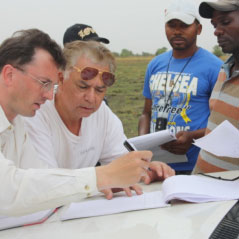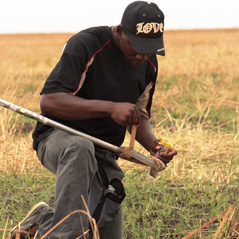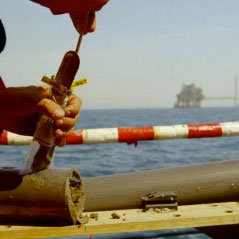Application of Microbial Prospecting for Oil and Gas
Basically no geological or seismic data is required to carry out a geo-microbial exploration survey. In areas which have not yet been investigated by geophysics, the MPOG® technique can be applied as a wild-cat exploration tool, in order to identify hydrocarbon signatures in green field areas. In this way subsequent geological and seismic investigations can thus be focused on hydrocarbon-prospective areas. Measurement points are laid over the area to be investigated in the form of a map grid. The stationary interval is from 500 m to a maximum of 2,000 m depending on the expected reservoir size.
In those regions where structure data of the sub-surface already exists, the stationary interval can be reduced to 250 - 500 m, in order to generate a more detailed picture of the hydrocarbon distribution. Likewise, this approach does not require any knowledge of the position of geologic structures. As a result therefore, the seismic structure maps and microbial anomalies, which have been recorded independently from one another, can be compared and contrasted.
A further application of microbial prospecting is reservoir characterization. In this case the distance between two measuring points should not exceed 200 m. The area of investigation is restricted to an already known structure. This method is particularly suited for evaluation of the reservoir dimensions and alterations of the oil-water contact due to long-term oil production processes.
Additional applications of MPOG® are frequent measurements within a safety monitoring program at underground gas storages or along pipelines.
Sampling procedure
Onshore, soil samples are taken in the field at pre-defined positions using an environmentally friendly hand auger set at a depth of 1 - 2 m. At each measurement point about 200 g of soil shall be packed in airtight sterile sampling bags. A temporarily storage at 4 - 10°C and transportation to the laboratory should not exceed a period of 14 days.
Offshore, seabed core samples are taken by means of a vibro-coring system or grab-sampler approx. 0.5 - 2 m below sediment surface. Sampling material for MPOG® analyses can easily be sub-sampled from cores on board a vessel.



